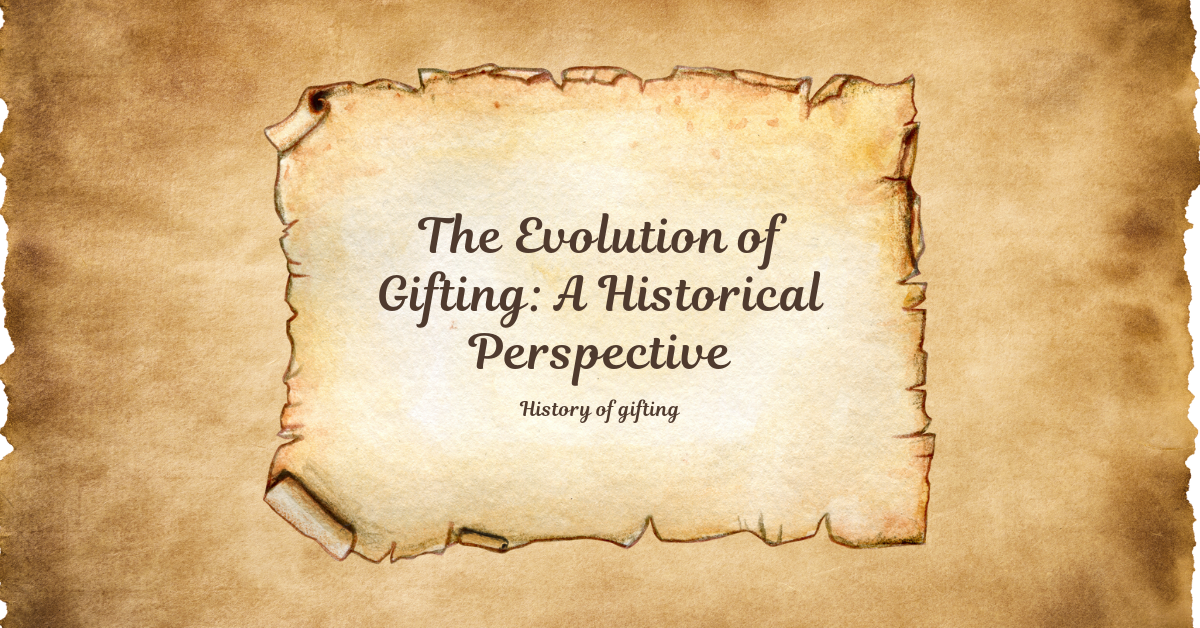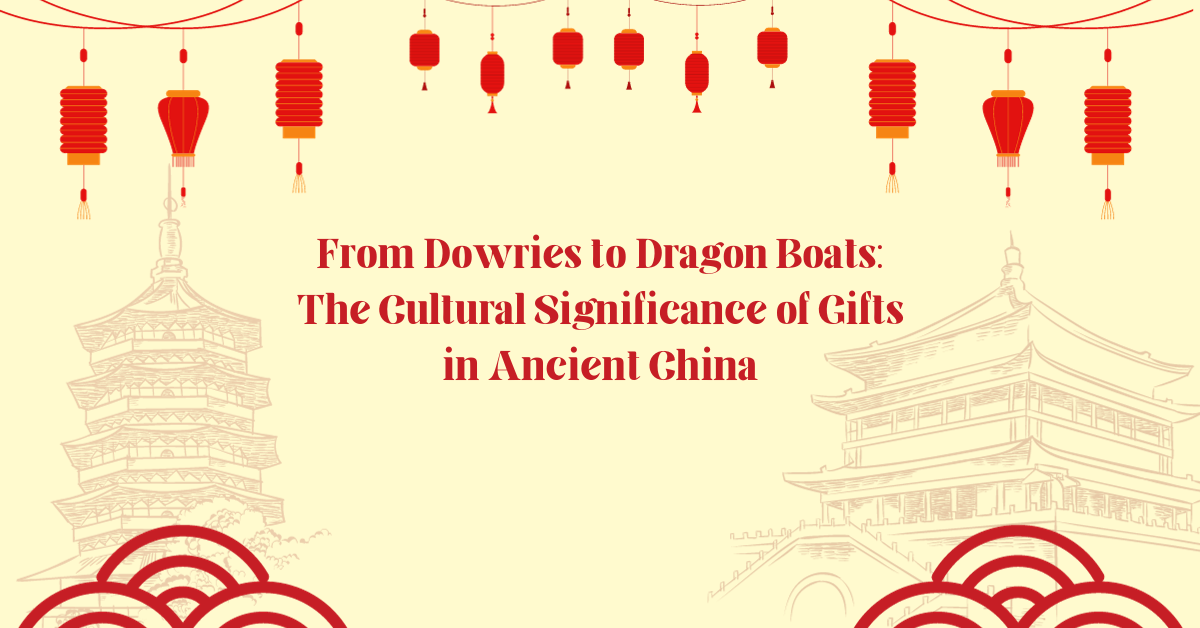Are you curious about how the act of gifting has transformed over the centuries? Dive into ‘The Evolution of Gifting: A Historical Perspective’ and explore the fascinating journey of giving presents.
From ancient origins to modern-day trends, discover how gifting has evolved in response to societal changes. Uncover the influence of medieval times, the Renaissance, industrialization, and more on the way we exchange gifts.
Get ready to embark on a captivating journey through the history of gifting.
The Ancient Origins of Gifting
You’ll explore how ancient civilizations shaped the practice of gifting.
In ancient times, gifting held a significant cultural and social importance. It wasn’t just about the act of giving, but also about establishing relationships, expressing gratitude, and maintaining social harmony.
Ancient civilizations like the Egyptians, Greeks, and Romans had their own unique ways of exchanging gifts. In Egypt, for example, gifts were often given to the pharaoh as a sign of loyalty and respect.
In Greece, gifts were seen as a way to forge alliances and strengthen diplomatic ties.
The Romans, on the other hand, used gifts as a means of displaying wealth and status.
These ancient practices laid the foundation for the modern concept of gifting, which continues to play a vital role in our society today.
Gifting in Medieval Times
During the medieval era, gifting became an integral part of societal customs and traditions, fostering relationships and reinforcing social hierarchies. Gifts played a crucial role in expressing one’s loyalty and gratitude towards others. They were often given to show appreciation, establish alliances, or gain favor with those in positions of power.
The type of gift and its value were carefully chosen to reflect the status and wealth of the giver. Nobles and wealthy landowners would exchange luxurious and extravagant gifts, such as fine jewelry, rare fabrics, or valuable artifacts. Commoners, on the other hand, would offer more modest presents, such as homemade crafts or agricultural produce.
Regardless of the social class, gifting in medieval times was a way to strengthen connections and maintain social harmony.
The Renaissance and the Rise of Exchanging Gifts
In the Renaissance, people began exchanging gifts as a way to demonstrate their appreciation and strengthen social bonds. During this period, gift-giving became more prevalent and played a significant role in social interactions.
It was customary for individuals to exchange presents on various occasions, such as weddings, birthdays, and religious celebrations. These gifts were often symbolic and intended to convey sentiments of respect, gratitude, and friendship.
The act of giving and receiving gifts was seen as a means to establish and maintain social connections, as well as to display one’s wealth and status. Moreover, gift-giving in the Renaissance was also a way for individuals to showcase their creativity and artistic skills, as many gifts were handcrafted and intricately designed. This practice further enhanced the value and significance of exchanging gifts during this period.
Industrialization and the Commercialization of Gifting
As society transitioned into industrialization, the act of gifting underwent a transformation, becoming more commercialized and emphasizing the exchange of mass-produced goods. With the advent of factories and the increase in production capabilities, gifting became more accessible to the general population.
Instead of handmade or personalized gifts, people now had the option to purchase ready-made items from stores. This shift in gifting culture also led to the rise of department stores and the development of advertising strategies to promote gift-giving.
The emphasis on commercialization meant that gifting became more focused on the exchange of material possessions rather than the sentiment behind the gift. As a result, the act of gifting became more transactional and less personal, marking a significant change in the way gifts were given and received.
Modern-Day Trends in Gift-Giving
You can now explore the modern-day trends in gift-giving, with a focus on the intersection of technology and personalization.
In today’s digital age, technology has transformed the way we give and receive gifts. Online shopping has become increasingly popular, allowing you to conveniently browse and purchase gifts from the comfort of your own home. With just a few clicks, you can have a gift delivered to your doorstep or directly to the recipient.
Furthermore, personalization has become a key trend in gift-giving. From custom-made items to personalized messages and engravings, people now have the ability to create unique and meaningful gifts that truly reflect the recipient’s personality and interests.
The combination of technology and personalization has made gift-giving more convenient and heartfelt than ever before.
Frequently Asked Questions
What Are Some Common Ancient Practices of Gift-Giving That Are Still Prevalent Today?
Some common ancient practices of gift-giving that are still prevalent today are exchanging presents during holidays, birthdays, and special occasions.
People often give gifts to show love, appreciation, and celebrate important milestones.
How Did the Societal Structure in Medieval Times Influence the Types of Gifts Exchanged?
In medieval times, the societal structure heavily influenced the types of gifts exchanged. Nobles preferred extravagant presents to display wealth and power, while commoners exchanged practical items.
This class divide shaped gifting customs.
Did the Renaissance Period Introduce Any New Customs or Traditions Related to Gift-Giving?
During the Renaissance period, new customs and traditions related to gift-giving emerged.
The wealthy elite began exchanging ornate and luxurious gifts to showcase their wealth and social status.
How Did the Rise of Industrialization Impact the Commercialization of Gift-Giving?
The rise of industrialization greatly impacted the commercialization of gift-giving.
As more goods were mass-produced, the availability and variety of gifts increased, making it easier for people to buy and exchange gifts.
What Are Some Modern-Day Trends or Emerging Practices in the Field of Gift-Giving?
Some modern-day trends in gift-giving include:
- Personalized and experiential gifts
- The rise of online shopping and gift registries
Emerging practices in gift-giving include:
- Eco-friendly gifting
- Socially conscious gift giving.
Conclusion
In conclusion, the evolution of gifting has seen a fascinating journey throughout history. From ancient origins rooted in cultural rituals to the exchange of gifts during the Renaissance, and the commercialization of gifting during industrialization, the act of giving has evolved alongside society.
In modern times, gift-giving trends continue to evolve, reflecting changing norms and preferences. The tradition of gifting remains a cherished way to express love, appreciation, and connection, transcending time and cultures.

